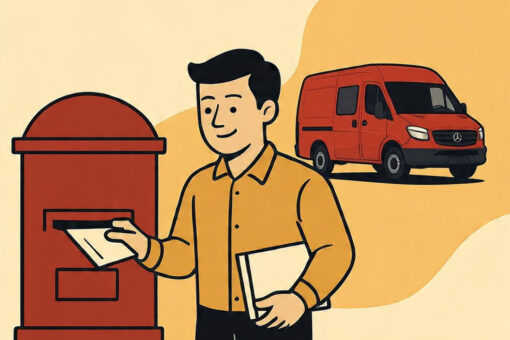
Strengthening India Post and the Indian Postal Bank
A Proposal for National Integration and Financial Inclusion
India Post stands tall as one of the nation’s most respected institutions — an organisation of national reckoning that touches every citizen from birth to death. It continues to be a trusted carrier of information and a symbol of integration across the country.
This proposal seeks to strengthen both India Post and the Indian Postal Bank, transforming them into the backbone of communication, savings, and financial access for every citizen.
Summary of the Proposal
All postal services should operate on a true cost basis with a 15% surplus, ensuring efficiency and sustainability.
The India Postal Bank must serve every citizen, ensuring universal access to banking.
India Post can further national integration by offering authentic translation services of laws, rules, and gazettes in all official languages.
Every government and official building should provide currency deposit and withdrawal facilities, for both Indian and international currencies.
Railway Stations should become hubs for Postal Bank and Postal Services, reviving the spirit of the Railway Mail Service through a modern hub-and-spoke model.
The Reserve Bank of India (RBI) may handle all coins and currency from mints and presses, while Postal Banks at railway stations act as currency chests and distribution hubs.
India Post may lease BSNL and other government properties for approved official services.
The Postal Bank must be compensated for services provided to government agencies.
The Postal Services Board can expand into “India Communication Services”, creating new cadres and employment opportunities.
Collaboration with the RBI and international postal systems can strengthen communication and currency exchange infrastructure.
Postal Services Board Proposal
The RBI should be the sole handler of coins and currency, managing chests for all banking entities on a correspondent basis.
Every financial institution should open a current account with the Postal Bank solely for cash supply and absorption.
The Indian Postal Bank should function as India’s largest narrow bank — collecting savings, offering 0% current accounts and nominal-interest savings accounts, without lending to individuals or institutions. It invests exclusively in central government securities.
The Postal Bank can sustain 1.75 lakh employees by collecting savings, disbursing cash, and operating under transparent, fee-based regulations.
Expansion of Functions
India Post may lease BSNL and government properties to handle approved activities of institutions such as the Election Commission, Parliament Secretariat, Judiciary, and others.
The Postal Board can engage UPSC applicants, apprentices, and trainees, especially those preparing for public administration, in structured programs.
Within the Parliament Complex, the Postal Board can act as an official communication channel for the Lok Sabha Secretariat, Rajya Sabha Secretariat, Election Commission, Finance Commission, and all constitutional bodies.
The Postal Bank should be compensated for all services rendered to government agencies operating on its premises.
Development of New Cadres
The Postal Services Board can evolve into India Communication Services, creating new cadres through UPSC or direct recruitment.
This Cabinet-approved personnel reform can generate large-scale employment while integrating communication and administrative functions across institutions.
A multilingual national communication backbone can emerge — using all 23 constitutional languages — positioning India Post as the nation’s authentic communication channel.
India Post can serve as the official translator for courts, ensuring accessibility and accuracy in every language.
Every government office should host a Post Office counter as a familiar citizen interface, reinforcing India Post’s role as the bridge between people and the State.
Collaboration with RBI and International Linkages
The Postal Services Board can manage RBI’s backend infrastructure, ensuring citizens’ easy access to the Postal Savings Bank.
It can facilitate currency exchange for foreign visitors and during emergencies such as hospital needs or national disasters.
Through the Universal Postal Union, India Post can represent India globally — training staff abroad and managing embassy-level communication systems.
Personnel Management
The Indian Postal Bank, under the Indian Postal Service, should become a channel of national integration and trust.
Every railway station should host a secure, well-built postal counter that accepts cash and checks from anyone within its jurisdiction.
Each station should have three service counters – outside, inside but before the platform, and within the platform area.
Cash deposit machines and ATMs will be installed near parking areas, ensuring convenience for local merchants.
This will mean around 24,000 Postal Bank counters across India and 100,000 deposit machines serving railway and transport hubs.
Post offices will also handle bus ticket counters, integrating postal and transport functions.
The idea is “banking on the go”, enabling merchants to deposit daily collections easily.
Postal Banks should operate from 6 AM to 10 PM, with employees working efficient four-hour counter shifts.
The RBI should ensure two ATMs per station, distributing new notes and coins in eco-friendly packaging.
Around 1.75 lakh employees will manage currency operations, with full access to social security and benefits, ensuring dignity of labour.
Employment and Recruitment
Anyone aged 21–70 years can opt for part-time or full-time work if they reside within 1–2 km of their assigned post.
The proposed workforce includes 1.75 lakh Junior and Senior Officers, recruited through UPSC or direct entry.
Work shifts will be organised into four rotations, each lasting four hours.
With over 40,000 bus and railway stations, total employment could reach 8 lakh individuals.
Students and young people above 18 years can join under an “Earn While You Learn” scheme.
A two-year apprenticeship will prepare workers for wider government roles, contributing to a national skills registry.
Operations and Expansion
The Indian Postal Bank can operate in airports in partnership with the Airport Authority of India.
The RBI can authorise it as the sole evacuator of currency from mints and presses to stations and cities.
Commercial banks would no longer need to maintain currency chests, as Postal Banks will handle cash logistics securely.
With protection from Railway and State Police, every major station can house Postal Bank ATMs and deposit machines.New ₹300 and ₹400 notes may be introduced — ₹300 for farmers and ₹400 as a symbolic wage for security personnel.
Express trains could carry Postal Bank compartments for the safe and quick transfer of currency.
Integration with state transport cooperatives will strengthen cash movement and public convenience.
Conclusion
The Indian Postal Bank will maintain strong daily cash flows, mobilising savings automatically from all sectors. With railway stations, bus depots, and airports serving as active financial hubs, this network will create new growth pathways for India.
Together, India Post and the Indian Postal Bank can unite communication, finance, and service — generating jobs, ensuring inclusion, and securing the nation’s currency system, all while reaffirming India Post’s role as a true symbol of trust and integration.


